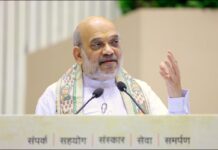 One of the most fundamental benefits under immigration law is for the ability of a US citizen to quickly sponsor a foreign national spouse for a green card. While the granting of immigration benefits is contentious in today’s political environment, no one has disputed, even immigration restrictionists, that a US citizen cannot swiftly bring into this country a foreign national whom he or she has married overseas.
One of the most fundamental benefits under immigration law is for the ability of a US citizen to quickly sponsor a foreign national spouse for a green card. While the granting of immigration benefits is contentious in today’s political environment, no one has disputed, even immigration restrictionists, that a US citizen cannot swiftly bring into this country a foreign national whom he or she has married overseas.
Under the Immigration and Nationality Act, the spouse of a US citizen qualifies as an immediate relative, and falls outside the quotas that other relatives of US citizens may be subject to such as adult sons and daughters or siblings. Minor children and parents of US citizens also qualify as immediate relatives.
The Form I-130 petition is used to sponsor a spouse, minor child or parent of a US citizen who is outside the US. In the recent past, such an I-130 petition filed with the United States Immigration and Citizenship Services on behalf of an immediate relative got approved in about 3-4 months. The case was then sent to the National Visa Center, a clearing house for the consular posts of the Department of State.
Once the petitioner submitted the required documents to the NVC, the file was dispatched to the consular post and an appointment was quickly scheduled. The entire process generally took about six months or a little over.
More recently, I-130 petitions filed on behalf of spouses and other immediate relatives are reportedly taking much longer. This author has heard that I-130s filed in January or February 2013 have still not been approved. The Vermont Service Center states that I-130 petitions received on October 22, 2012 for immediate relatives are being adjudicated presently.
The California Service Center does not indicate any processing time for a similar I-130 petition. This is quite frankly a shocking state of affairs. The reason for the delay is that the I-130s are being shunted to local USCIS offices for processing rather than being processed at the California or Vermont Service Centers, which is how they were processed previously.
Still, this is no excuse for the USCIS to cause so much delay. It makes no sense to allow spouses of US citizen to wait for so long outside the US before they can join their loved one in the US. The USCIS is capable of far greater efficiency as it demonstrated when it more quickly adjudicated thousands upon thousands of applications under the Deferred Action for Childhood Arrivals (DACA) program.
While the filing of a concurrent I-130 petition with an I-485 application for adjustment of status may process more quickly, the foreign spouse has to be in the US in order to adjust status. If a spouse enters the US on a nonimmigrant visa, such as a tourist visa, with the intention to adjust status, such an I-485 can be denied if the spouse had a preconceived intent to apply for permanent residence while entering the country as a tourist. If, on the other hand, the spouse came genuinely as a tourist, but changed his or her mind after arriving in the US, then it can be demonstrated that there was no preconceived intent, or worse, fraud or misrepresentation with respect to the purpose of entering the US on a tourist visa.
Of course, if the spouse enters on a nonimmigrant visa, such as an H-1B or L visa, which allows for dual intent, then the spouse’s intent to apply for a permanent immigrant benefit is not an issue. The number of people on H or L visas who become spouses of US citizens is relatively few, though, and many people are unable to apply for a tourist visa to even visit the US temporarily to meet their spouses while the I-130 petition remains pending. People who are nationals of Visa Waiver countries can visit the US for 90 days without applying for a visa, but they too may risk being questioned about their intent at the port of entry.
The filing of an I-130 petition for consular processing, when the spouse is based overseas, is thus the legally appropriate method to apply. The USCIS should not discourage this process by inordinately delaying the approval of an I-130 petition, and thus encourage people to circumvent the process by coming on tourist visas, or other nonimmigrant visas that do not allow for dual intent, with the intent to apply for adjustment of status.
Moreover, it is worth noting that with Section 3 of the Defense of Marriage Act being declared unconstitutional in United States v. Windsor, same sex spouses of US citizen can also for a green card through an I-130 petition. These spouses were unjustly deprived of a benefit for years on end as a result of an unconstitutional statute, and they should not be required to wait that much longer for the I-130 petition to get approved.
In light of long delays in the processing of the I-130 petition, it may be worth considering filing an I-129F petition for a K-3 visa. Congress specifically designed the K-3 visa to allow spouses of US citizens to enter the US if the I-130 processing got delayed. In recent times, K-3 petitions have not been filed due to the fact that I-130 petitions were processed in a few months. It now makes sense to revive the K-3, and to file for it after the I-130 petition has been filed.
Both the Vermont and California Service Centers indicate that K-3 processing is taking 5 months. If that time frame is accurate, then the beneficiary of a pending I-130 petition, which is expected to take a year or longer under current processing times, can at least unite with the US citizen spouse through a K-3 visa. Once the spouse is here on a K-3 visa, it is permissible under law to file an I-485 application for adjustment of status. While this is not a perfect solution as it involves two steps, the spouse can at least expect to unite with the US citizen spouse somewhat sooner.
(This advice is for informational purposes only and does not constitute legal advice).
Cyrus D. Mehta






